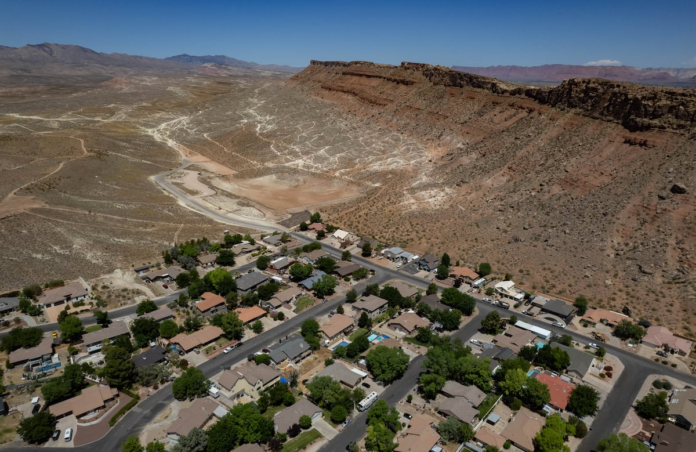Looking north from Pioneer Park in St. George, Utah, is like looking back in time. If you squint you can almost see dinosaurs treading along the horizon. It’s easy to see why the thought of a four-lane highway blazing through the stunning vista of Red Cliffs National Conservation Area strikes a painful chord for the people who cherish it — locals and visitors alike.
We owe it to public outcry from thousands of local residents that the hugely unpopular Northern Corridor Highway project has been rejected seven times in the past 20 years. In my time working with Conserve Southwest Utah, I’ve had countless conversations with people who are fired up and fed up about the highway. Lately, I hear more of the latter.
I hear exhaustion. The highway is back on the table again? And anger. Why are local leaders ignoring the real and valid concerns of their constituents? I also hear more and more people who are afraid. We don’t want the highway but we feel like the deck is rigged in its favor.
You may be feeling that yourself, but we can’t stop now. The highway is not inevitable and you have the power to let your voice be heard.
Whether you live in southern Utah or not, here’s why we must continue to rally against the Northern Corridor Highway.
It’s not just Washington County at risk — this is a national issue.
Red Cliffs Desert Reserve was designated by Congress to “conserve, protect, and enhance … ecological, scenic, wildlife, recreational, cultural, historical, natural, educational, and scientific resources” of the public lands within the unit.
Building a highway through it is a clear violation of its purpose. Indeed, paving over this desert paradise violates multiple bedrock environmental laws. If the highway is built over a federally protected National Conservation Area, it sets a frightening precedent for protected public lands across the country.
It won’t stop here.
What some people don’t know is that Red Cliffs was a compromise. It was created in 1996 as protected public land to allow for 300,000 acres of development across Washington County. Just a decade later county officials walked back those protections when they introduced the campaign for the Northern Corridor Highway.
After years of public pushback, the county introduced a new bargaining chip — tying limited, temporary protections for Zone 6 (a swath of land southwest of town) to the highway. The Moe’s Valley Area in Zone 6 is a gem of recreation and sensitive tortoise habitat, worthy of permanent protection — but the protections the county agreed to were flimsy, not binding, and would end in about 20 years.
More importantly, if you trade one protected land for another, then how meaningful are those protections really? If county officials did not honor their promises before, why should we believe they will do it now?
We are being served a false choice. County officials can absolutely work to permanently protect both Moe’s and Red Cliffs — but they haven’t yet shown the will.
Washington County has a unique opportunity to grow the right way.
The first time I visited St. George, I fell in love. I was awestruck by how quickly you could get from the heart of the city into absolute redrock wilderness. I know many have moved here or stayed here for the very same reason.
Our beautiful surroundings are a primary reason why this is one of the fastest growing metro regions in the country. They are also a reason why we cannot make rash decisions about the way we grow.
Building a highway is irreversible. That scar through a popular recreation area cannot be undone. On top of this, the county’s own traffic study shows that a highway would not meaningfully improve traffic at our problem intersections. In fact, it would actually increase the amount of time and miles people spend in their cars.
Studies show that the best way to mitigate traffic is by improving intersections, synchronizing signals, expanding transit options, and aligning transportation and land-use planning so that people don’t have to drive as far.
It is not too late for Washington County to grow the right way. The highway is a move in the wrong direction.
My hope is that our elected officials will start to listen — to traffic experts, to city planners, and most importantly to their own constituents. We would welcome a respectful and productive dialogue to find solutions that serve everyone and protect what makes this place special.
If this is something you also want, please let our leaders know. Send them an email or give them a call. We have a right to be heard.
Stacey Wittek is a mountain biker and outdoor enthusiast who grew up in the American Southwest. She currently serves as the Executive Director for Conserve Southwest Utah and lives in Washington City.




